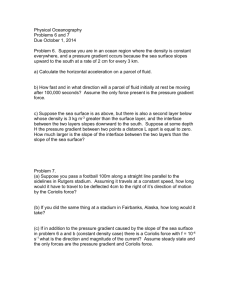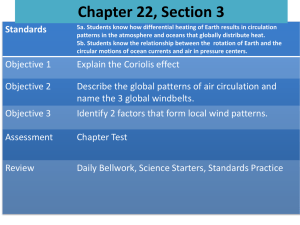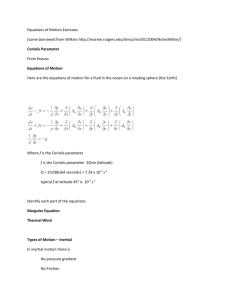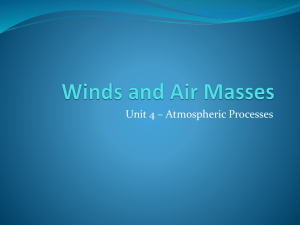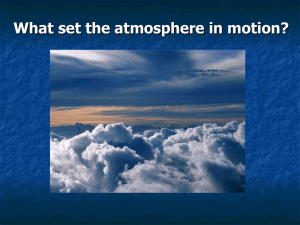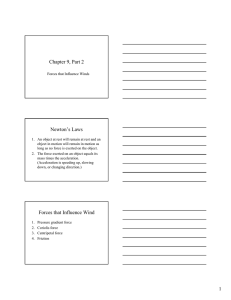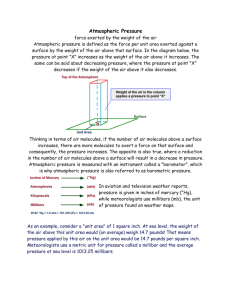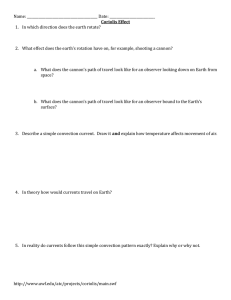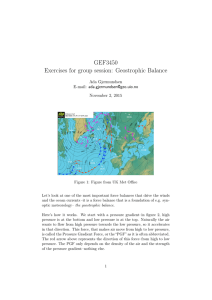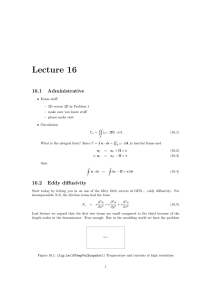GEO1030 Fall 2004 Pa (1 Pa = 1 N/m
advertisement
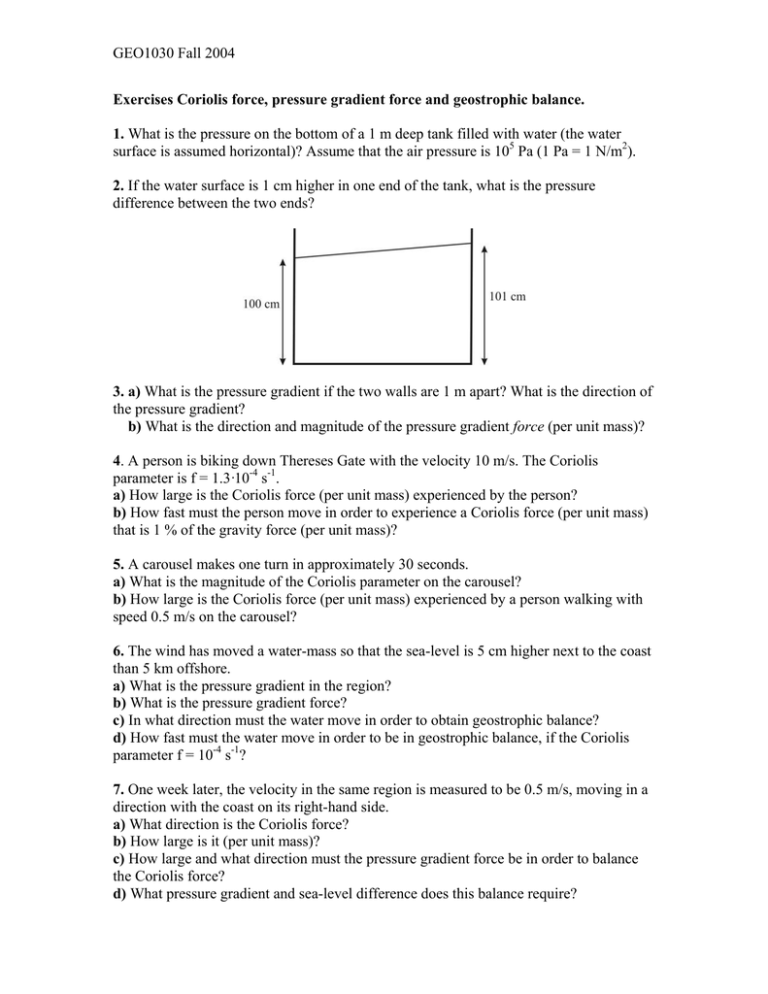
GEO1030 Fall 2004 Exercises Coriolis force, pressure gradient force and geostrophic balance. 1. What is the pressure on the bottom of a 1 m deep tank filled with water (the water surface is assumed horizontal)? Assume that the air pressure is 105 Pa (1 Pa = 1 N/m2). 2. If the water surface is 1 cm higher in one end of the tank, what is the pressure difference between the two ends? 3. a) What is the pressure gradient if the two walls are 1 m apart? What is the direction of the pressure gradient? b) What is the direction and magnitude of the pressure gradient force (per unit mass)? 4. A person is biking down Thereses Gate with the velocity 10 m/s. The Coriolis parameter is f = 1.3·10-4 s-1. a) How large is the Coriolis force (per unit mass) experienced by the person? b) How fast must the person move in order to experience a Coriolis force (per unit mass) that is 1 % of the gravity force (per unit mass)? 5. A carousel makes one turn in approximately 30 seconds. a) What is the magnitude of the Coriolis parameter on the carousel? b) How large is the Coriolis force (per unit mass) experienced by a person walking with speed 0.5 m/s on the carousel? 6. The wind has moved a water-mass so that the sea-level is 5 cm higher next to the coast than 5 km offshore. a) What is the pressure gradient in the region? b) What is the pressure gradient force? c) In what direction must the water move in order to obtain geostrophic balance? d) How fast must the water move in order to be in geostrophic balance, if the Coriolis parameter f = 10-4 s-1? 7. One week later, the velocity in the same region is measured to be 0.5 m/s, moving in a direction with the coast on its right-hand side. a) What direction is the Coriolis force? b) How large is it (per unit mass)? c) How large and what direction must the pressure gradient force be in order to balance the Coriolis force? d) What pressure gradient and sea-level difference does this balance require?
